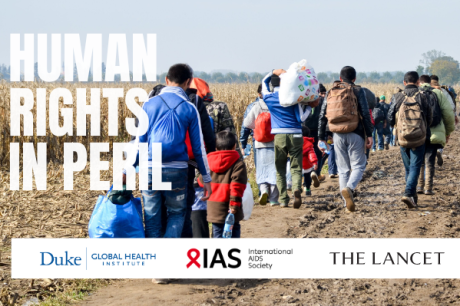
Varun Jain (right) and his Student Research Training (SRT) team enjoying lunch after finishing work at a school.
Published June 17, 2016, last updated on October 17, 2017 under Voices of DGHI
By Varun Jain
Adrenaline was pumping through my veins. I stared intently at my adversary, my body poised to react at the slightest movement. Whack! I brought my flyswatter down on the cockroach’s now crumpled body. Pleased with my victory, I retreated to the bathroom to wash off my weapon. Not exactly how I expected to spend my eight weeks in the island paradise of Roatan, Honduras.
Then again, that seems to be a recurring theme for me and my teammates on our research expedition.
Roatan is the major island of Honduras’ Bay Islands state. In a country ravaged by violence and crime, Roatan is an economic beacon for the nation, primarily fueled by tourism revenues. Even still, the island has a near-70% unemployment rate and with more and more mainland Hondurans trying to immigrate to escape harm and hopefully find a stable life, this number is only increasing.
Additionally, the diminishing economic opportunities have led to the formation of impoverished communities composed of hastily-built shacks inhabited by large families. Roatan may have once been an idyllic island, but a burgeoning population, an “islander-versus-mainlander” mentality, and socioeconomic divides have brought about very real issues for the people who live here.
Our program, “Saving Sight: Roatan” enables us to work with Clinica Esparanza, one of the few healthcare providers on the island, to go into local schools and give out glasses to those who need them.
In preparing for our trip, we assumed Honduran schools would be much like American ones. We had envisioned rigid start and end times, orderly classrooms, and students who had acquired what we consider to be typical elementary knowledge, such as directions and the alphabet.
Instead, we encountered schools starting and ending at seemingly random times, teachers who struggle to maintain control in their classrooms, and many children as old as 10 who still didn’t know their ABCs.
Sensing our frustration, our community partners at Clinica Esparanza, Dr. Stacy Zuniga and Peggy Stranges, R.N., helped us make sense of all of this.
These “random” times were a result of May and June being exam season for Honduran public schools, which were crucial for both the students and schools to do well in. And the sheer number of kids in each class presented incredible challenges for teachers. In fact, I spoke with a 3rd grade teacher who told me she had 53 students in one class. When I asked her why, she shrugged and said, “There’s nowhere else for them to go.” With low tax revenue and corruption, schools are forced to do the best with what they had. This undoubtedly helps explain why many of the children haven’t learned basic elementary skills. If you’ve always had 52 other students trying to learn from one person, of course your learning experience will be hampered.
With these realities in mind, we’ve worked with both the clinic and teachers to develop strategies that are mutually beneficial, and we hope to be able to implement these as we work to help as many of Roatan’s children as we can.


